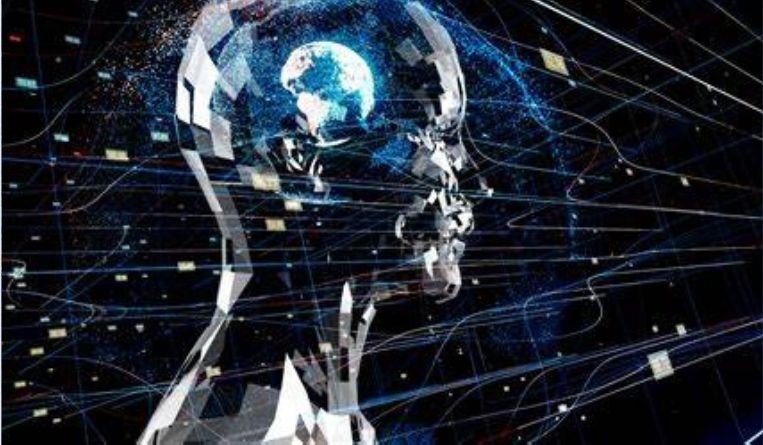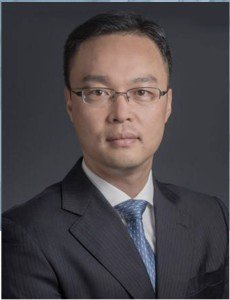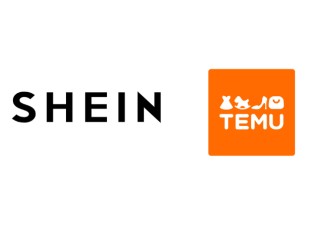Patentability of AI-related patent applications
As the use of artificial intelligence increases, examiners are increasingly being asked to determine whether AI-related applications can be patented.
The patentability of AI-related patent applications may be of concern in different jurisdictions. In this paper, we will provide an overview of patentability of AI-related applications with reference to the examination guidelines of the U.S. Patent and Trademark Office, the European Patent Office and the China National Intellectual Property Administration, and we will present some advice for drafting AI-related applications.
Categories of AI technology
Artificial intelligence technology can be in one of three categories from the perspective of patent applications; that is, AI algorithms, AI functional applications and AI industrial applications.
-
AI algorithms are core algorithmic approaches used to implement AI functions. Examples of AI algorithms include deep learning, logic programming, neural networks, support vector machines and so on.
-
AI functional applications cover the functions performed by AI algorithms, independent of the industrial field of application. Examples of AI functional applications include augmented reality, computer vision, information extraction, robotics and son on.
-
AI industrial applications cover AI applications in various specific fields. Examples of AI application fields include telecommunications, transportation, life and medical sciences, industry and manufacturing, networks, as well as banking, entertainment, security, agriculture, and so on.
Eligibility evaluation of the USPTO: The Alice/Mayo test
The 2019 Revised Patent Subject Matter Eligibility Guidance (2019 PEG) provides an improved two-step framework for determining whether a subject matter is eligible to be patented. In Step 2A Prong One, the 2019 PEG provides means to evaluate whether a claim recites a judicial exception, i.e., an abstract idea, a law of nature or a natural phenomenon. The 2019 PEG particularly enumerates groupings of abstract ideas, i.e., mathematical concepts, certain methods of organizing human activities, and mental processes, and defines mathematical concepts as mathematical relationships, mathematical formulas or equations and mathematical calculations.
If the answer to Prong One is that the claim does not recite a judicial exception, the claim is qualified as eligible subject matter; otherwise, the eligibility analysis goes to Step 2A Prong Two, in which it provides means to evaluate whether the claim recites additional elements that integrate the judicial exception into a practical application. As explained in the 2019 PEG, the evaluation of Prong Two requires the use of such considerations as improving technology, effecting a particular treatment or prophylaxis, implementing with a particular machine, etc., to ensure that the claim as a whole integrates the judicial exception into a practical application, that will apply, rely on or use the judicial exception in a manner that imposes a meaningful limit on the judicial exception. For example, if the additional limitations reflect an improvement in the functioning of a computer, or an improvement to another technology or technical field, the claim integrates the judicial exception into a practical application and thus imposes a meaningful limit on the judicial exception, and the claim is eligible at Step 2A.
If the answer is no in Prong Two, the analysis goes to Step 2B, in which it provides means to evaluate whether the additional elements, taken individually and in combination, result in the claim, as a whole, amounting to significantly more than the judicial exception, i.e., whether any additional element, or combination of additional elements, adds an inventive concept to the claim. For instance, the answer to Step 2B may be no if the additional claim elements just recite well-understood, routine, conventional activity in the relevant field, which cannot add an inventive concept to the claim.
Patentability evaluation of EPO: Technical character test
The Guidelines for Examination in EPO 2018 edition added a new section providing specific guidance about the patentability of artificial intelligence and machine learning under the category of mathematical methods.
According to the EPO Guidelines, artificial intelligence and machine learning are based on computational models and algorithms for classification, clustering, regression and dimensionality reduction, such as neural networks, genetic algorithms, support vector machines, k-means, kernel regression and discriminant analysis. Such computational models and algorithms are per se of an abstract mathematical nature, irrespective of whether they can be “trained” based on training data. Hence, the guidance about the patentability of mathematical methods generally applies also to such computational models and algorithms.
EPO Guidelines emphasize that terms such as “support vector machine”, “reasoning engine” or “neural network” may, depending on the context, merely refer to abstract models or algorithms and thus do not, on their own, necessarily imply the use of a technical means. This has to be taken into account when examining whether the claimed subject-matter has a technical character as a whole. That is, exclusion of eligibility applies if a claim is directed to a purely AI computational model or algorithm because it lacks a technical character. On the other hand, applications of AI computational model or algorithm in various fields are eligible subject matter. For example, the use of a neural network in a heart monitoring apparatus for the purpose of identifying irregular heartbeats makes a technical contribution. The classification of digital images, videos, audio or speech signals based on low-level features are further typical technical applications of classification algorithms.
If a claim is directed either to a method involving the use of technical means (e.g. a computer) or to a device, its subject-matter has a technical character as a whole and is thus not excluded from eligibility. Then it is examined in respect of the other requirements of patentability, in particular novelty and inventive step.
For the assessment of inventive step, it is assessed whether the mathematical method contributes to the technical character of the invention and only the features which contribute to the technical character of the invention are taken into account. For example, the technical contribution of a mathematical method to a technical character may be controlling a specific technical system or process, digital audio, image or video enhancement or analysis and so on. A generic purpose such as “controlling a technical system” is not sufficient to confer a technical character to the mathematical method. The technical purpose must be a specific one.
Patentability evaluation of CNIPA: Technical character test
The Guidelines for Examination in the China National Intellectual Property Administration’s (CNIPA) 2020 edition added a new section providing specific guidance about the eligibility of artificial intelligence, big data and block chain under the category of computer programs. According to the CNIPA Guidelines, first, if a claim involves abstract algorithms and does not contain any technical features, the claim belongs to rules and regulations of mental activities stipulated in Article 25(1)(2) of the Chinese patent law and should be excluded from eligible subject matter. For example, a method for establishing a mathematical model based on an abstract algorithm that does not contain any technical features is not eligible.
Second, if a claim includes abstract algorithms and additional technical features, it is necessary to consider all the features in the claim as a whole to determine whether the claims belong to a technical solution stipulated in Article 2 of the Chinese patent law. For example, if each step of the algorithm involved in the claim is closely related to the technical problem to be solved, such as the data processed by the algorithm is data with exact technical meaning in the technical field, the execution of the algorithm can directly reflect the use of natural laws to solve a certain technical problem and obtain a technical effect, the claim usually belongs to the eligible technical solution.
Furthermore, when examining the inventive step of a claim that contains both technical features and algorithm features, the algorithm features that are functionally mutually supportive and have an interaction relationship with the technical features shall be considered together with the technical features as a whole, which are used together to solve a technical problem and obtain a technical effect.
Comparison of patentability evaluations among USPTO, EPO and CNIPA
The USPTO’s Alice test includes the evaluation of inventive concept in the eligibility analysis; a claim would be determined as not eligible if additional elements of a claim cannot integrate the abstract concept of the claim into a practical application or cannot add inventive concept.
The EPO’s technical character test evaluates eligibility and inventiveness one-by-one. The criteria for eligibility evaluation seems easy to meet: as long as a claim is directed either to a method involving the use of technical means (e.g., a computer) or to a device, its subject-matter has a technical character as a whole and is eligible. However, the following inventiveness evaluation only considers the abstract concept that contributes to the technical character of the invention.
CNIPA’s technical character test also evaluates eligibility and inventiveness one-by-one. But the criteria for eligibility evaluation is higher than that of the EPO; that is, the eligibility evaluation requires the algorithm to be closely related to the technical problem to be solved. In other words, just reciting general technical means in addition to the algorithm in a claim would not lead the claim to be eligible. This aspect is actually more like the Step 2A Prong Two of the Alice test. Similar to the EPO, the following inventiveness evaluation only considers the abstract concept that contributes to the technical character of the invention.
If assuming the judgments of “abstract concepts” were same in the three jurisdictions, we believe the results of patentability evaluations would be same because the three jurisdictions similarly divide a claim into abstract concept and technical features and consider the abstract concept in the inventiveness evaluation only when the two parts are related in a specific application rather than in a general way.
However, the practical results of patentability examination for AI-related applications seem different in the three jurisdictions. Referring to the three categories of AI technology, the patentability of the AI industrial applications and AI functional applications is generally recognized in all three jurisdictions because of their obvious technical attributes. Regarding the AI algorithms, the Guidelines of both the EPO and CNIPA clearly provide that AI algorithms independent of a specific application are not patentable subject matters, either by name of eligibility or inventiveness, while the USPTO’s 2019 PEG does not provide that AI algorithms must be mathematical concepts. The practical conclusion for the eligibility of AI algorithms seems different to some extent by means of the USPTO’s Alice test. For example, if we look at U.S. patents of the famous Dropout algorithm (US 9,406,017 B2) and so on, such as (US 10,796,223 B2), we do not see an expectation that the same claim can be allowed by the EPO or CNIPA. From the exampled U.S. patents, it seems that at least the general structure of a neural network can be eligible by means of the Alice test.
Maybe the difference depends on whether some AI algorithms are considered as mathematical concepts or computer application of mathematical concepts. We support the opinion that AI algorithms are computer applications of mathematical concepts, given that AI technology itself is a specific technical field and AI algorithms are the most important core techniques driving the AI applications.
Draft advice for AI-related patent applications
-
Both the Alice test and the technical character test request substantive correlation between the abstract conceptual elements and technical elements of a claim. Cued from this, for the draft of AI-related patent applications, the general advice for the drafter is to include more language in the specifications to show how the claimed invention is an improvement over the prior art, in addition to clearly describe the interaction of elements. This explanation of the improvement or technical effect will be very helpful for evaluating a claimed subject matter to be patentable.
-
As the wide application of AI technology in various industrial fields, inventions of AI industrial applications may be of much bigger number than that of AI functional applications and AI algorithms. For many AI industrial applications, the drafter may try to describe the AI part as a block box in some claims if possible in order to improve the detectability of claim features. Moreover, additional features related to the process or structure in the block box will contribute to the patentability.
-
For AI functional applications such as augmented reality, computer vision and so on, invention in this aspect usually comes from improvement or adjustment of related AI algorithms, such as the procedure of machine learning, the structure of neural network. The patentability of such subject matter would not be a problem generally. However, the author has been puzzled how to effectively protect such a subject matter, because the detectability of claim features seems to be difficult when we describe for example the learning process or neural network structure in a claim.
-
For AI algorithms, as discussed, the patentability of AI algorithms which are independent of a specific application may be a problem in some jurisdictions. However, we believe it is worthwhile to draft some claims related to application-independent AI algorithm, as we may expect AI algorithms to be patentable in the future as national examination guidelines evolve. In addition, to be prudent, it is recommended to describe the AI algorithm in some representative specific applications in the specification, either functional application or industrial application, so as to provide a backup for patentability.









